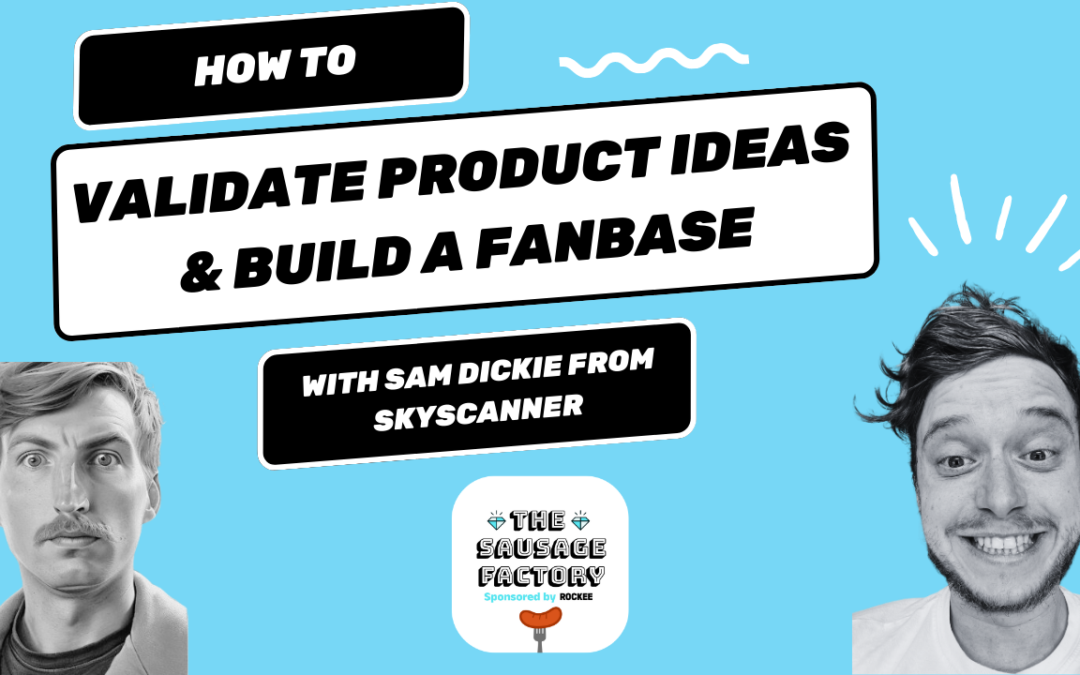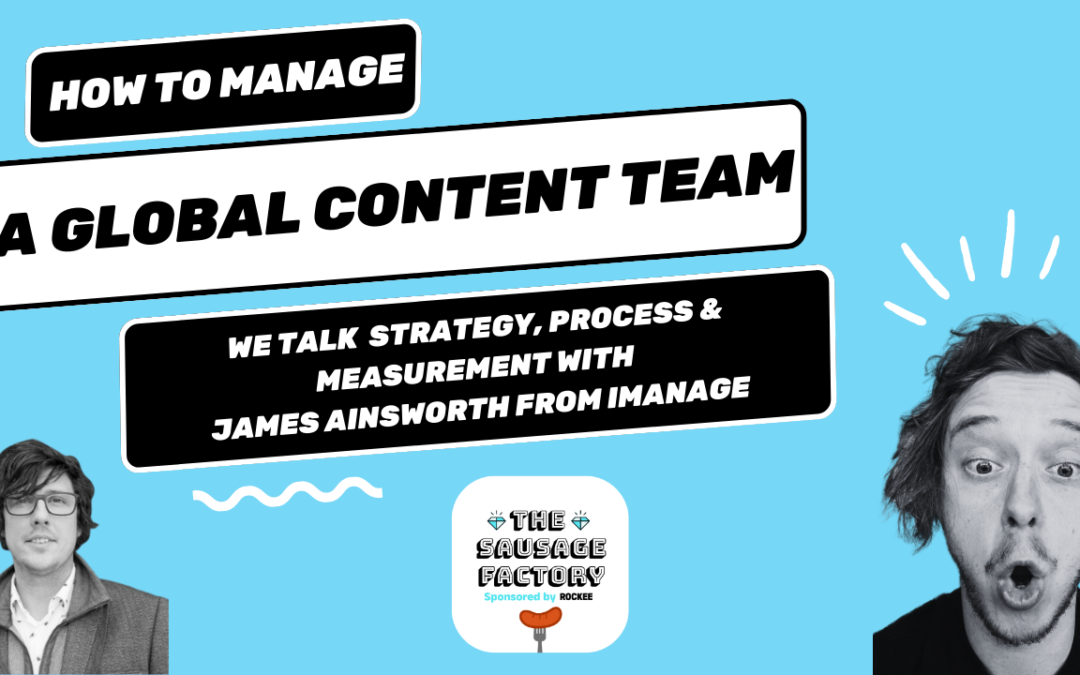We recently caught up with Sam Dickie, a Senior Product Manager at Skyscanner, who is also an expert in the content creator space. But that’s not all – Sam’s expertise goes beyond his role at Skyscanner. He also lends his knowledge to startup consultancy and curates the super popular and informative Creator Club newsletter. This covers all things startups, no-code, Ai, and indie hacking. With his deep understanding of content performance, we were eager to get him on the podcast.
During our chat with Sam, we dive into the essential art of product idea validation and explore why it is crucial to act fast on your concepts. He also shares valuable insights on why there has never been a better time than now to create something remarkable. As well as how to master content performance.
We’ve pulled out the top headlines from the episode with Sam, so you don’t miss anything!
Takeaway #1: Validate validate validate – how to build a startup
Sam believes that validating ideas for a start-up, be it an app, or SaaS solution – before diving into code or no-code solutions is crucial. To streamline the process, he divides it into two very important phases: problem validation and solution validation.
Problem validation focuses on starting with a clear understanding of the problem at hand. Something you need to do by speaking to your potential audience. A lot of the time, we come up with solutions right away, but no no no. It’s important to really understand the problem first before jumping to solutions.
It’s time to ask yourself some content questions
Here’s what you should be asking yourself before committing to a solution:
- How much of a problem is this? Is this something you encounter once a month or once a year? *You could still encounter it daily, but it’s just not a big enough problem that you’re actively looking for a solution or willing to even pay for a solution.
- Are there any other existing solutions out there to that problem and how successful are they?
- When is this problem encountered?
Once you’ve harvested all that insight, you can then move on to solution validation. Now it’s time to build that solution as fast as you can. All your previous research will help you to get the right MVP in the hands of your users as quickly as possible.
At this point of the process you’ll be receiving important signals. Signals and strong evidence to suggest that the user is actually willing to use your product and potentially pay for it. That’s why speed is important here.
Another important piece to the puzzle is ensuring that there are multiple feedback loops buried into the product.
Always be searching for feedback, don’t be the founder who launches without any feedback loops, “they’re basically sitting in a car with their headlights off driving in the dark. They have no idea what’s going on. So you can’t quantify success when you’re in the dark.
You need to be able to have a feedback loop to understand whether you’re doing good or doing bad, you want to understand if you’re doing a good job or not”.
Basically, don’t get lost in the dark. Make sure you’re switching your headlights on, full beam.
Takeaway #2: 1,000 true fans – building a newsletter following
Sam’s newsletter journey started as a passion project. Driven by his love for sharing cool products and interesting content with friends and family. After running various newsletters, he decided to take on the challenge of creating his own, and that’s how the Creator Club newsletter was born.
Inspired by Kevin Kelly’s concept of a thousand true fans, Sam saw the potential of using the newsletter as a launching pad for future projects and products. Kevin’s idea predicted a thriving industry of creators with just 1,000 dedicated fans.
Sam was also open about his dyslexia, which once held him back from writing. However, he soon realised that content performance outweighed perfect spelling.
Authenticity and valuable content mattered most to his audience, and negative feedback was rare. So, Sam encourages everyone to embrace their uniqueness, keep creating, and you’ll find your 1000 true fans too!
Takeaway #3: Authenticity wins when creating content
Sam is a purist and we love that. He’s all about writing about what you’re generally interested in, “I think I’ve always looked at it where I kind of write based on my interests and like not for algorithms. You’ll see a lot of writers are just building their content around the algorithm, and you can see through it straight away, right?”
He emphasises the fact that it’s important to steer clear of content that seems contrived or built solely for SEO optimization. As more and more people are building to satisfy SEO, there seems to be less authenticity hanging about.
For Sam, the tone of voice and the author’s personality play a significant role in making content enjoyable and easy to digest. Of course, you want to connect with the author and the subject, if you know something has just been created for clicks with no real thought surrounding it, you’re already going to have your back up a bit.
Of course, Sam had to mention Packy McCormick, the author of the Not Boring newsletter. Packy has the tone of voice down to a T, it’s relaxed, approachable but also full of knowledge and Sam has taken the same approach with his newsletter. The focus on authenticity and genuine interest has allowed him to build a loyal audience for Creator Club.
Matt’s bangers
We asked Sam what piece of content has caught his eye for all the right reasons, here’s his answer.
There were quite a few great pieces of content to choose from. But in the end, he settled on an obvious pick: First Round Capital’s (prominent VC) incredible blog. What sets it apart is the long-form content that’s genuinely informative without any fluff. It’s concise, deep, and sometimes complex, but written by real experts whose backgrounds are front and centre.
The reading experience is fantastic. With subtle elements like a progress bar to track how much you’ve read and a handy sticky navigation that stays with you as you scroll down. Sam loves the clean layout with no advertising, making it a full-screen dream for content performance and ensuring your focus stays on the valuable insights each piece offers. Obviously, it’s a 10/10 from Sam.
The sausage of death
Sam shared a piece of content with us that definitely didn’t hit the mark – it’s content Business Insider. He’s not a fan. The content is filled with clickbait titles and is missing any real substance or value creation. Full of fluff and loaded with pesky pop-ups and ads, making the mobile experience an absolute nightmare. It’s a lot.
Finally, the writing style feels generic, as if it could be churned out by anyone in a factory. He doesn’t recognize any names, and they all sound the same. So, sorry to anyone who writes there, but it’s a real content performance banger of a letdown!
What’s next
Sam, we loved having you on the podcast! Keep an eye out for more conversations with great guest experts in the future.
What’s your favourite Matt’s Banger and have you come across any pieces of content that give you a headache? We’d love to hear about what’s caught your eye for the right AND wrong reasons.
Watch the episode with Sam here, give it a listen here or why not catch up on some of our other episode write-ups here.




